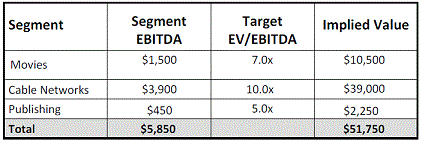- CFA Exams
- 2025 Level II
- Topic 5. Equity Valuation
- Learning Module 20. Equity Valuation: Applications and Processes
- Subject 4. Absolute and Relative Valuation Models
Seeing is believing!
Before you order, simply sign up for a free user account and in seconds you'll be experiencing the best in CFA exam preparation.
Subject 4. Absolute and Relative Valuation Models PDF Download
Valuation models can be categorized into two groups: absolute and relative valuation models.
Absolute valuation models specify an asset's intrinsic value, supplying a point estimate of value that can be compared with market price.
- Present value models of common stock (also called discounted cash flow models) are the most important type of absolute valuation model. If they are based on dividends then they are called dividend discount models.
- There are other absolute valuation models that are based on free cash flows, accounting income and bond payments.
- Asset-based valuation is used to value a company's assets based on their market value.
Relative valuation models specify an asset's value relative to the value of another asset. They do not indicate any absolute value of the company. They can only signal, whether an asset is under- or over-valued relatively to some benchmark. As applied to equity valuation, relative valuation is known as the method of comparables: In applying the method of comparables, analysts compare a stock's price multiple to the price multiple of a similar stock or the average or median price multiple of some group of stocks.
Relative equity valuation models do not address intrinsic value without the further assumption that the price of the comparison value accurately reflects its intrinsic value.
Even if some asset is considered to be relatively undervalued comparing to the benchmark, it may be overvalued in the absolute terms, if the benchmark itself is significantly overvalued and its market value is going to decline.
Example
An equity analyst is researching health care information services industry. He compares the companies within the industry using the P/E ratio. Based on this analysis, he assigns one of the three ratings to each of the companies in the industry: "industry outperform", "industry average", or "industry under-perform." A private investor reads the research report and then invests in all companies rated "industry outperform." He then sees his total investments dropping in value by 25% during the next 6 months. The investor calls the analyst and asks for explanation behind the losses. The analyst replies that he is very satisfied with his earlier research report and confirms all ratings assigned earlier.
Why do the analyst and the investor differ in opinions about the effectiveness of the research report?
The analyst employed relative valuation analysis in his research. In his report he expressed the opinion, that certain stocks will achieve higher returns than the industry as a whole. Apparently, his favorite stocks indeed outperformed the industry average. However, the investor is mostly interested in absolute value of his investments. Even though his investments outperformed the industry, the market dynamics for all companies in the industry was negative, which resulted in loss in absolute terms.
Sum-of-the-Parts Valuation
The sum-of-the-parts analysis is used to value a company with business segments in different industries that have different valuation characteristics. It is a useful methodology to gain a quick overview of a company by providing a detailed breakdown of each business segment's contribution to earnings, cash flow, and value. Many companies can be viewed as a candidate for break-up valuation.
Example
Time Warner, Inc.

What is conglomerate discount?
Sometimes SOTP does not equal the value of the whole company. Investors can achieve diversification on their own. The whole is often worth less than the sum of its parts. Investors often point to the conglomerate discount as a market inefficiency and view the discount as a way to buy undervalued stocks. Conglomerate discount is the reason why many conglomerates spin off or divest subsidiary holdings.
Issues in Model Selection and Interpretation
The broad criteria for selecting a valuation approach are that the valuation approach be:
- consistent with the characteristics of the company being valued. Understanding the business is the first step in the valuation process. When we understand the company, we understand the nature of its assets and also how it uses those assets to create value.
- appropriate given the availability and quality of the data. The availability and quality of data are limiting factors in making forecasts and sometimes in using specific financial performance measures. As a result, data availability and quality also bear on our choice of valuation model.
- consistent with the analyst's valuation purpose and perspective. The purpose or perspective of the analyst - for example, the ownership perspective - can also influence the choice of valuation approach. The analyst is frequently a consumer as well as a producer of valuations and research reports. Analysts must consider potential biases when reading reports prepared by others: Why was this particular valuation method chosen? Are the valuation model and its inputs reasonable? Does the adopted approach make the security look better (or worse) than another standard valuation approach?
User Contributed Comments 0
You need to log in first to add your comment.

Your review questions and global ranking system were so helpful.

Lina
My Own Flashcard
No flashcard found. Add a private flashcard for the subject.
Add